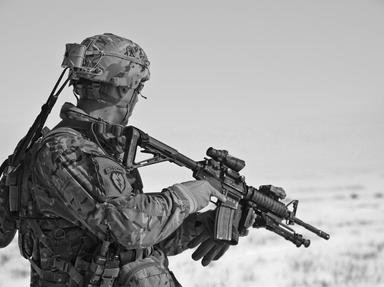Quiz Answer Key and Fun Facts
1. What was distinctive about the U.S. Civil War era Le Mat revolver?
2. Which of these is a semi-automatic revolver?
3. This handgun, which "fired" a rocket projectile, was designed and built in the mid-1960s. What was it called?
4. Why are firearms, such as the Thompson, the MAC 10 & 11, the Uzi, the MP 5,...etc, called "sub"-machine guns?
5. Can a .38 Special cartridge be safely fired from a .357 magnum revolver?
6. Which of these hand guns, as originally manufactured, could be fired in a full automatic mode?
7. What is a Pedersen device?
8. The U.S. Rifle Cal .30 M1, the Garand, was arguably the best military rifle of WW2. It did, however, have an undesirable feature when used in short range fire fights. What was it?
9. The lands and grooves inside the barrel of a long gun, which differentiates a "rifle" from a smooth bore "musket," have been known to improve the accuracy and power of a long gun since the 15th century. What probably caused, after such a long wait, the relatively sudden adaption of the rifle as a standard military weapon in the mid 19th century?
10. What was the first breech loading rifle to be used in actual combat?
Source: Author
clemmydog
This quiz was reviewed by FunTrivia editor
Bruyere before going online.
Any errors found in FunTrivia content are routinely corrected through our feedback system.

